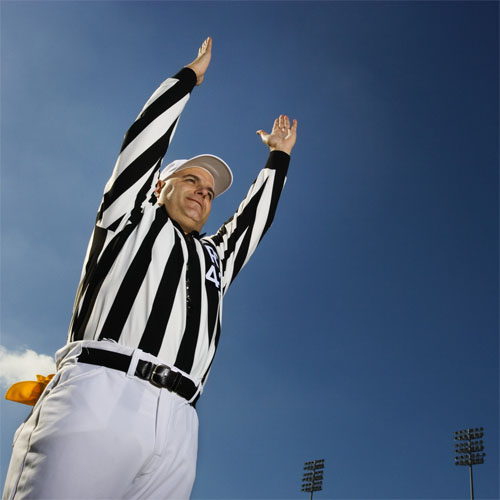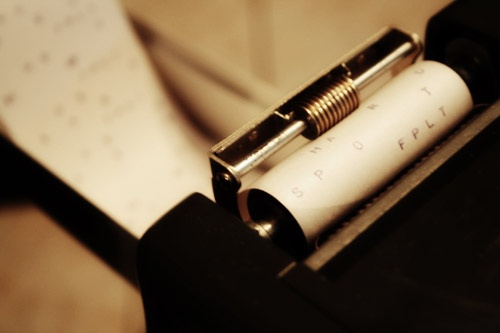
Zebra
Somewhere in, NJ
Male, 62
I've officiated football for over 30 years, now in my 26th on the college level. I've worked NCAA playoffs at the Division II and III level. In addition, I've coached at the scholastic level and have been an educator for over 35 years. I have no interest whatsoever in being an NFL official! Ever!
No. Only a player - someone in the game/on the field - or a substitute - someone coming on to the field to replace a player - can call tmieout.
At least in college, it is illegal. For safety reasons. A trainer needs to be able to see a player's eyes if they are hurt. If a helmet can't be removed (e.g. possible neck injury) the eyes will help determine consciousness.
Nope. The player is ineligible by number and that is always the case on a pass that crosses the line of scrimmage.
Blocking downfield seems to indicate you're looking at offensive pass interference. In college, pass interference only occurs when a legal forward pass crosses the line of scrimmage. If a pass is caught behind the line, it obviously hasn't crossed the line of scrimmage. If it's a backward pass (no such thing as a lateral) then it isn't forward and you can't have OPI.
Antiques Dealer
 If you buy an item that turns out to be stolen, do you have to turn it over to the police?
If you buy an item that turns out to be stolen, do you have to turn it over to the police?
Subway Store Manager
 Does Subway have a secret menu?
Does Subway have a secret menu?
Court Reporter
 How do you transcribe when people in the courtroom are talking over and interrupting each other?
How do you transcribe when people in the courtroom are talking over and interrupting each other?
A fumble is a fumble, not a backwards pass. That being said, they're both still alive for a defensive score.
Oooh, good question. First, if a defender intercepts a pass from the five yard line in to the goal, he gets momentum, meaning if he ends up in the end zone it was his momentum that put him there so he isn't penalized. It will be his team's ball at the spot of the interception - btw, you'll see an official drop a bean bag at that spot to mark it. However, that isn't what you asked. You wrote "he runs back into the endzone ", meaning he put himself in the endzone. If he falls or is tackled there, it's a safety.
First, minor correction: B receives the kick. The foul by A is a previous spot, meaning a rekick after penalty enforcement.
-OR-
 Login with Facebook
Login with Facebook (max 20 characters - letters, numbers, and underscores only. Note that your username is private, and you have the option to choose an alias when asking questions or hosting a Q&A.)
(A valid e-mail address is required. Your e-mail will not be shared with anyone.)
(min 5 characters)
By checking this box, you acknowledge that you have read and agree to Jobstr.com’s Terms and Privacy Policy.
-OR-
 Register with Facebook
Register with Facebook(Don't worry: you'll be able to choose an alias when asking questions or hosting a Q&A.)